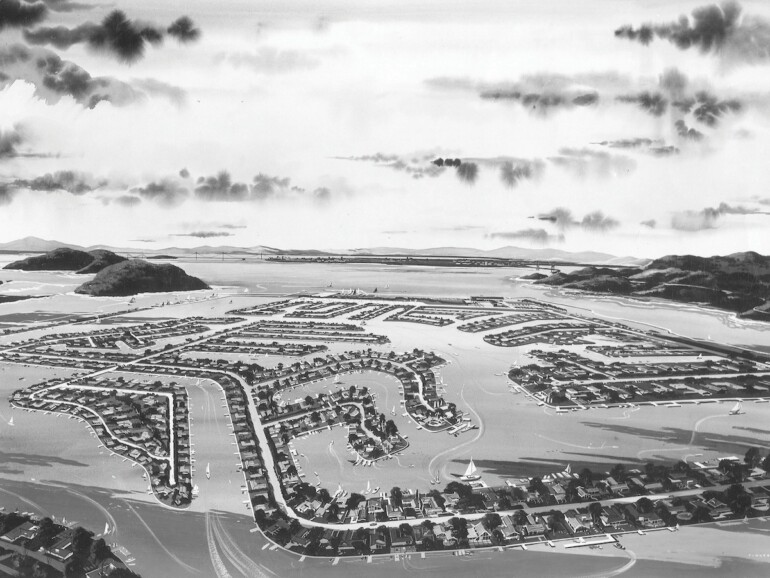It started in 1949 when Belvedere businessman Benton Bostick and his Reedport Properties paid $42,000 to acquire 879 acres of land that were, literally, underwater. They were the Richardson Bay tidelands that stretched nearly two miles from the village of Strawberry to the City of Belvedere (at the time, Tiburon wasn’t incorporated).
Then in 1956, according to local historian David Gotz, Utah Construction Company — then one of the world’s largest corporations — announced their intent to purchase Reedport’s tidelands for $600,000 and develop a marina with 2,200 homes (note rendering). As to where its homes would be built? Easy, Utah Construction would trim the top off nearby hills and use the soil to create dozens of lagoons.
Thankfully, that never happened. Still, Reedport wanted to sell its vast tidelands. Enter Carolyn Livermore and the Marin Conservation League. By 1957, three events had taken place: 1. The state had said it wanted to widen two-lane Tiburon Boulevard into a four-lane highway from Highway 101 straight through Blackie’s Pasture then along the shoreline to Belvedere and Tiburon. 2. Reedport had dropped the price of its tidelands to $200,000. And 3. Mrs. Livermore had raised $100,000 and obtained a $500 option to purchase the tidelands at its new price.
Then, knowing opposition to the state’s highway widening plan would be greatly reduced if it owned the tidelands where its four-lane highway would border the bay, Mrs. Livermore, et al, offered to sell 41 shoreline acres to the state for $100,000. It would all be contingent on the group acquiring the entire bay’s tidelands for $200,000. In other words, they’d put the $100,000 from the sale together with the $100,000 they’d raised and become owners of what is now the Richardson Bay Audubon Wildlife Sanctuary.
The story’s other happy ending was in 1964 when the Town of Tiburon was incorporated and a first item of business was to stop the widening of Tiburon Boulevard at Trestle Glen Boulevard. And, with Blackie’s Pasture fully intact, that’s where it remains today.


